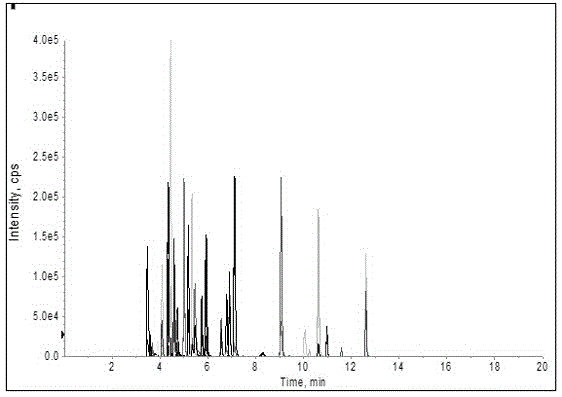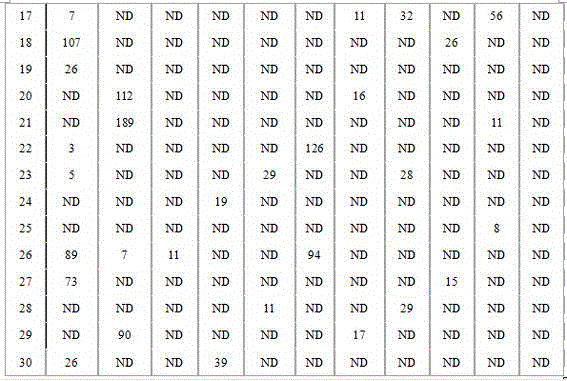Automatic sample pretreatment and detection method for detecting residual of multiple pesticides in tea leaves
A technology for pesticide residue detection and sample pretreatment, which is applied in the direction of measuring devices, instruments, scientific instruments, etc., can solve the problems of long time, low automation procedures, and complicated operations, and achieve high work efficiency, high automation procedures, and simple operations. Effect
- Summary
- Abstract
- Description
- Claims
- Application Information
AI Technical Summary
Problems solved by technology
Method used
Image
Examples
Embodiment Construction
[0021] The present invention will be further described below in conjunction with the examples.
[0022] Take 50-100g of dry tea and grind it into powder with a pulverizer, weigh 2.0-5.0g with an electronic balance with a sensitivity of 0.0001g and add it to the sample pool of a 34mL accelerated solvent extraction instrument, add 5mL of deionized water, and let it stand for 5min Place the sample cell in the accelerated solvent extractor. The parameters of the accelerated solvent extraction instrument are: the extraction solvent is dichloromethane, the extraction temperature is 95-100°C, the static pressure is 1450-1500psi, the static time is 4.5-5.5min, the flushing solvent is 35-45%, the perfusion time is 50-60s, cycle 2 ~3 times.
[0023] The extract is filtered through anhydrous sodium sulfate into the automatic sample bottle of the automatic quantitative concentrator, and then concentrated to near dryness. Parameters of automatic quantitative concentration: 3-5mL acetone ...
PUM
 Login to View More
Login to View More Abstract
Description
Claims
Application Information
 Login to View More
Login to View More - R&D
- Intellectual Property
- Life Sciences
- Materials
- Tech Scout
- Unparalleled Data Quality
- Higher Quality Content
- 60% Fewer Hallucinations
Browse by: Latest US Patents, China's latest patents, Technical Efficacy Thesaurus, Application Domain, Technology Topic, Popular Technical Reports.
© 2025 PatSnap. All rights reserved.Legal|Privacy policy|Modern Slavery Act Transparency Statement|Sitemap|About US| Contact US: help@patsnap.com



